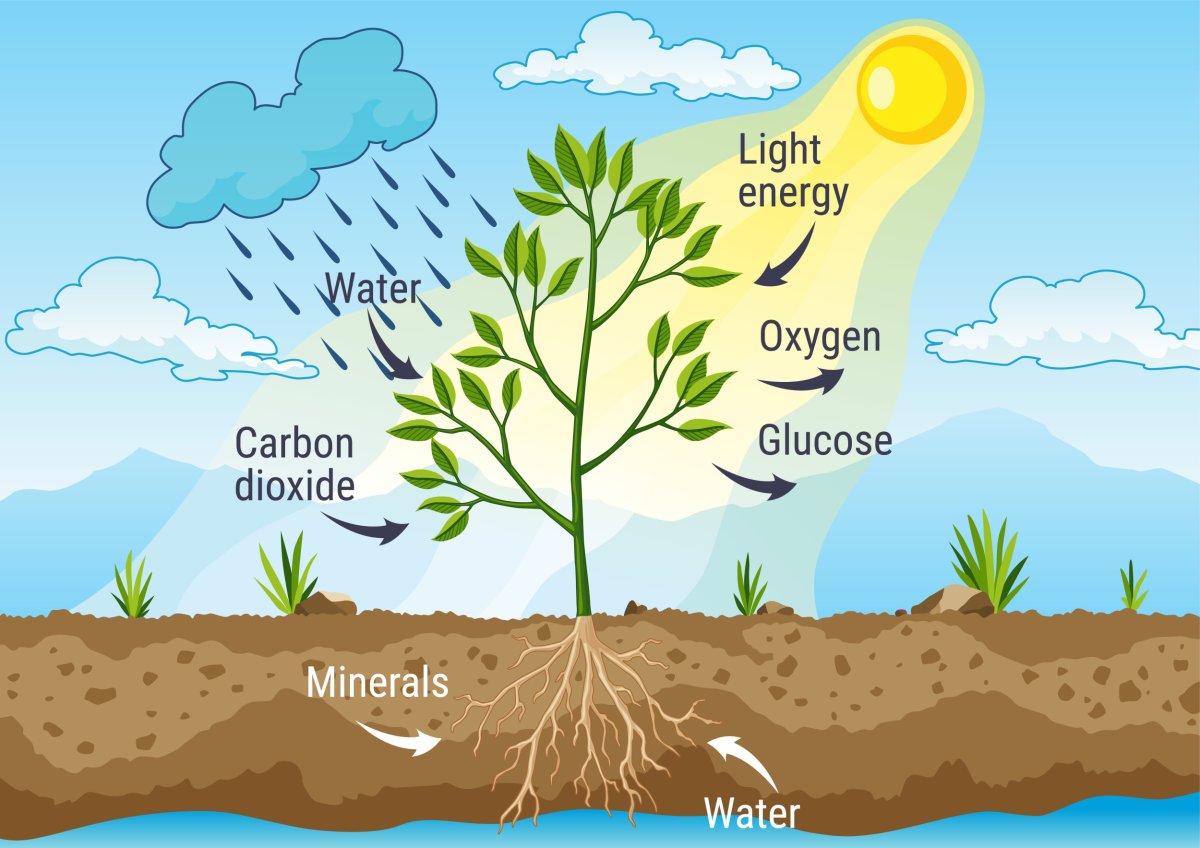Plants may be better at mopping up the carbon dioxide we keep spilling into the atmosphere than scientists first thought, according to new research.
Ecological modeling has shown that our leafy friends appear to be able to take up more atmospheric CO2 from human activities than previously predicted, a new paper in the journal Science Advances reveals.
While this may mean that plants may be able to suck more CO2 out of the atmosphere, this doesn't mean that we should lessen our efforts to lower emissions but instead highlights the importance of conserving the plants we still have.
"Plants take up a substantial amount of carbon dioxide (CO2) every year, thereby slowing down the detrimental effects of climate change, but the extent to which they will continue this CO2 uptake into the future has been uncertain," Jürgen Knauer, an environmental modeling researcher at Western Sydney University and co-author of the paper, said in a statement.
"What we found is that a well-established climate model that is used to feed into global climate assessments by the likes of the IPCC predicts stronger and sustained carbon uptake until the end of the 21st century when extended to account for the impact of some critical physiological processes that govern how plants conduct photosynthesis."

Photosynthesis works by using energy from the sun's light to power a reaction between CO2 and water inside the plants' leaves, converting them to oxygen and sugars that sustain the plant. The carbon is then stored within the plants, making vegetation a form of carbon sink.
In the study, the authors describe how they modeled how plants would remove CO2 from the atmosphere in a high-emission scenario under different levels of accounting for plant physiological processes.
"We used a terrestrial biosphere model for this analysis, which is the land component of a climate model," Knauer told Newsweek. "Such models represent a suite of processes related to plant physiology, growth, etc. In this case, we accounted for three additional processes that are usually ignored in such models: 1) how efficiently CO₂ can move inside the leaf (a term called mesophyll conductance); 2) how plants adjust to changes in their surrounding temperature (also known as thermal acclimation); 3) how they distribute nutrients most economically."
They found that more complex models that incorporated the details of how plants photosynthesize—most similar to real life—showed that plants would be capable of absorbing more CO2 from the air than first assumed.
They found that the most realistic model that accounted for all three processes gave a 20 percent higher CO2 uptake on average between 2070 and 2099 compared to the simplest version.
"Because the majority of terrestrial biosphere models used to assess the global carbon sink are located at the lower end of this complexity range, accounting only partially for these mechanisms or ignoring them altogether, it is likely that we are currently underestimating climate change effects on vegetation as well as its resilience to changes in climate," Silvia Caldararu, an assistant professor in climate science at Trinity College Dublin, said in the statement.
"We often think about climate models as being all about physics, but biology plays a huge role and it is something that we really need to account for.
"These kinds of predictions have implications for nature-based solutions to climate change such as reforestation and afforestation and how much carbon such initiatives can take up. Our findings suggest these approaches could have a larger impact in mitigating climate change and over a longer time period than we thought," she said.

The authors stress that these findings do not mean that our foot should be taken off the proverbial gas pedal when it comes to mitigating CO2 emissions and the effects of climate change. These past 12 months were the hottest in over 100,000 years, and the planet may warm between 2 and 4 degrees Celsius (3.6 to 7.2 degrees Fahrenheit) by the year 2100.
"This is good news as this modeling result suggests that plants may be more resilient to climate change as previously thought. That means of course that vegetation must be protected or restored as much as possible. It is also important to note that our results do not suggest that we can keep emitting fossil fuels for longer. This is because vegetation alone (and the associated CO2 uptake) will not be able to slow down climate change sufficiently well to avoid negative consequences," Knauer said.
Additionally, vegetation may not be as efficient at absorbing CO2 forever, as the changes in temperature and rainfall with climate change may alter their capacity to sink carbon.
Do you have a tip on a science story that Newsweek should be covering? Do you have a question about photosynthesis? Let us know via science@newsweek.com.
Update 11/21/23 1:17 p.m. ET: This article was updated with comment from Knauer.
About the writer
Jess Thomson is a Newsweek Science Reporter based in London UK. Her focus is reporting on science, technology and healthcare. ... Read more
To read how Newsweek uses AI as a newsroom tool, Click here.



